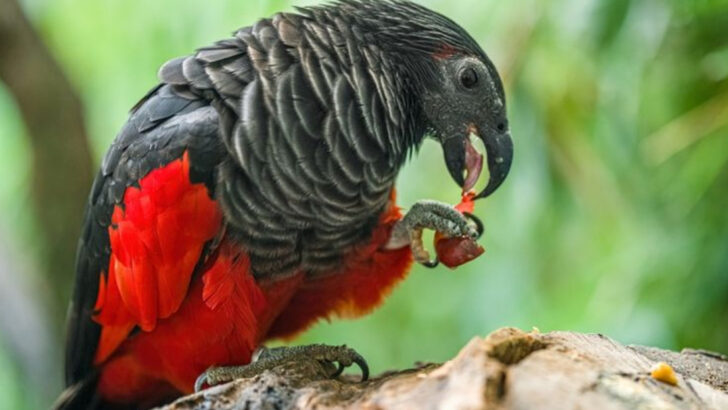The Dracula Parrot looks like it flew straight out of a Tim Burton film—and it’s 100% real.
Jet-black feathers. Blood-red chest. A face like a vulture and the attitude to match.
Native to the cloud forests of New Guinea, this eerie creature isn’t just striking—it’s a total enigma.
Forget cute and cuddly. The Dracula Parrot is part goth, part villain, and completely mesmerizing.
But behind its spooky style lies a bird with habits so strange, even seasoned biologists have done a double-take.
From its freaky voice to its vampire-inspired diet (don’t worry, no actual blood), the Dracula Parrot is packed with surprises.
This isn’t your grandma’s backyard birdwatching. This is nature in full theatrical mode—moody, mysterious, and magnificent.
Ready to meet the most gothic bird on Earth? Buckle up. The Dracula Parrot doesn’t do ordinary.
Want to see what makes this bird so hauntingly unforgettable?
The Gothic Appearance
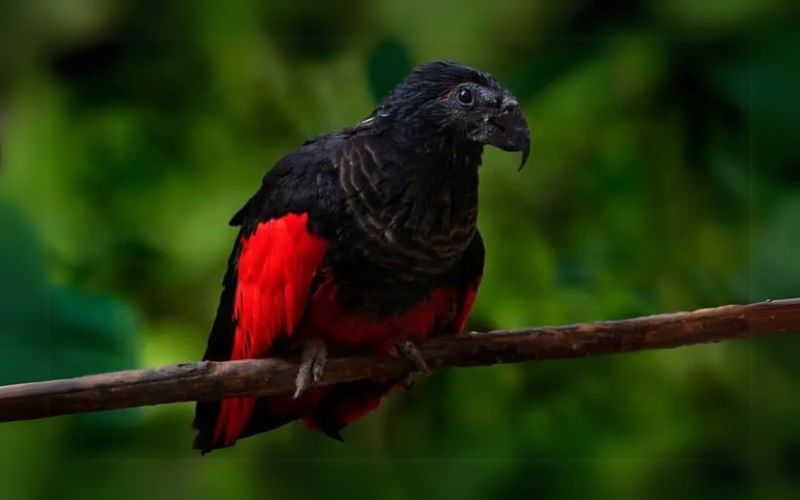
Envision the scene: amidst the lush green canopy, a bird with the shadowy elegance of a vampire perches silently. The Dracula Parrot, with its jet-black feathers and vivid crimson chest, seems to have stepped right out of a gothic novel. This dramatic appearance isn’t just for show; it’s a pivotal part of its survival strategy. Blending seamlessly into the dense rainforest shadows, it eludes predators while its red chest flashes a warning to potential threats. This unique appearance makes the Dracula Parrot a standout in the avian world, both aesthetically and functionally.
A Frugivore’s Diet
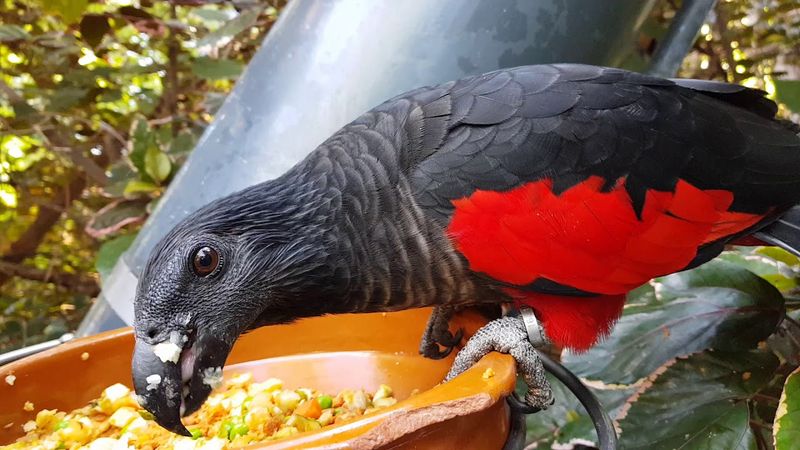
What fuels this gothic bird’s mysterious life? The Dracula Parrot feeds almost exclusively on figs, making it a true frugivore. Its strong, curved beak and agile claws are perfectly adapted for climbing trees and extracting its favorite fruit. Interestingly, this specialized diet limits its range to areas where these figs are abundant. By focusing on this nutrient-rich food, the parrot can maintain its energy and vitality. The unique diet of the Dracula Parrot not only supports its survival but also plays a role in shaping the ecosystem, as it disperses seeds across the rainforest.
A Unique Vocalization
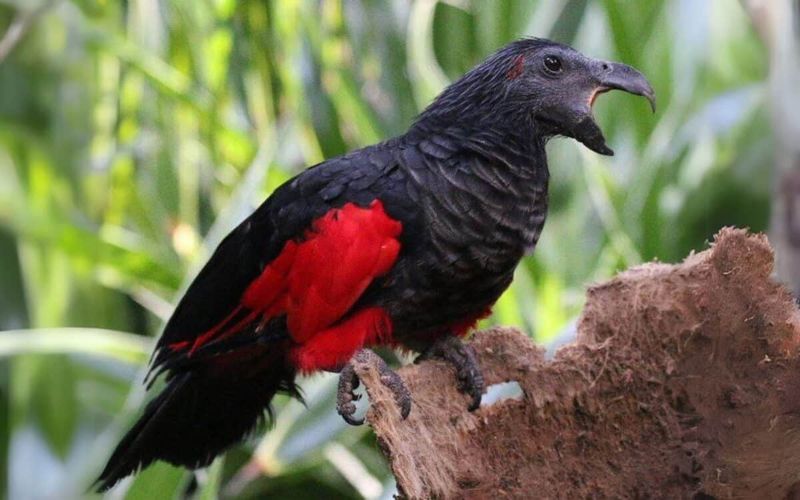
Imagine a sound that sends shivers down your spine. The Dracula Parrot’s call is a raspy, harsh caw, reminiscent of a creature from the depths of a gothic tale. This eerie vocalization is not just for drama; it serves a purpose in communication and territory defense. In the dense forests of New Guinea, the parrot’s distinct voice carries over long distances, ensuring its presence is known. This unique vocal signature helps it stand out among the forest’s cacophony, making it both a fascinating and essential aspect of its gothic persona.
Endemic to New Guinea
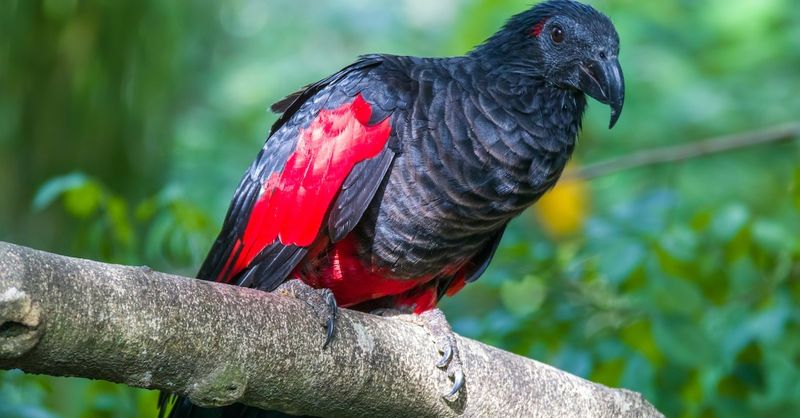
Nestled in the heart of the Australasian realm, New Guinea boasts a remarkable biodiversity. Among its treasures is the Dracula Parrot, found nowhere else on the planet. This unique bird is endemic to the island, thriving in its dense rainforests. The geographical isolation of New Guinea has allowed the Dracula Parrot to evolve and adapt in unparalleled ways. Its presence is a testament to the island’s rich environmental tapestry. For birdwatchers and researchers, New Guinea offers a rare glimpse into the life of this extraordinary creature, adding to its allure and mystique.
Striking Sexual Dimorphism
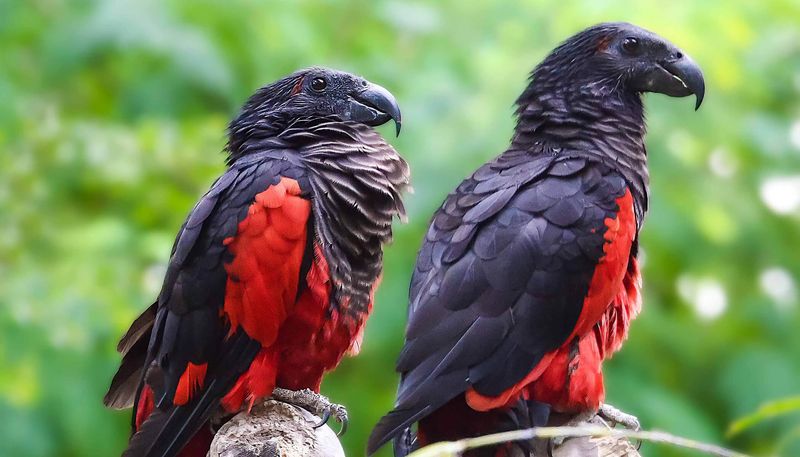
In the world of the Dracula Parrot, love and beauty are showcased in striking contrasts. This species exhibits sexual dimorphism, where males and females display distinct physical characteristics. Males are slightly larger with more vibrant feather coloration, while females possess subtler hues. This difference isn’t just for show; it plays a crucial role in mating and reproduction. Through these visual cues, partners are attracted and paired. Such vivid contrasts in appearance between the sexes highlight the complexity and intrigue of the Dracula Parrot’s mating rituals, a fascinating feature of its gothic allure.
Role in Seed Dispersal
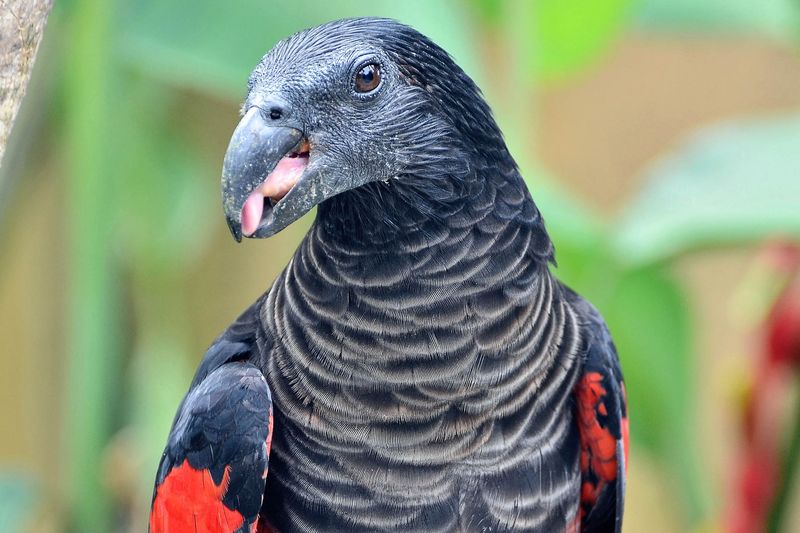
Beyond its eerie allure, the Dracula Parrot serves as a vital ecological player. As it feasts on figs, it inadvertently disperses seeds throughout the forest. This process is crucial for maintaining the ecological balance and promoting plant diversity in its habitat. The parrot’s role in seed dispersal underscores its importance beyond mere appearance. By spreading seeds far and wide, the Dracula Parrot contributes to the regeneration of the rainforest, ensuring a thriving environment for future generations. Thus, its gothic presence is not just a visual delight but a beacon of ecological significance.
Threatened by Logging

The haunting call of the Dracula Parrot faces a growing threat. Logging activities in New Guinea have encroached upon its natural habitat, posing significant risks to its survival. As trees are felled and forests shrink, the parrot’s home becomes increasingly fragmented. This loss of habitat not only jeopardizes the bird’s existence but also affects the entire ecosystem reliant on these forests. Conservation efforts are crucial in safeguarding the Dracula Parrot’s future. Protecting its habitat is imperative for preserving its gothic allure and the intricate web of life it supports.
The Only Member of Its Genus
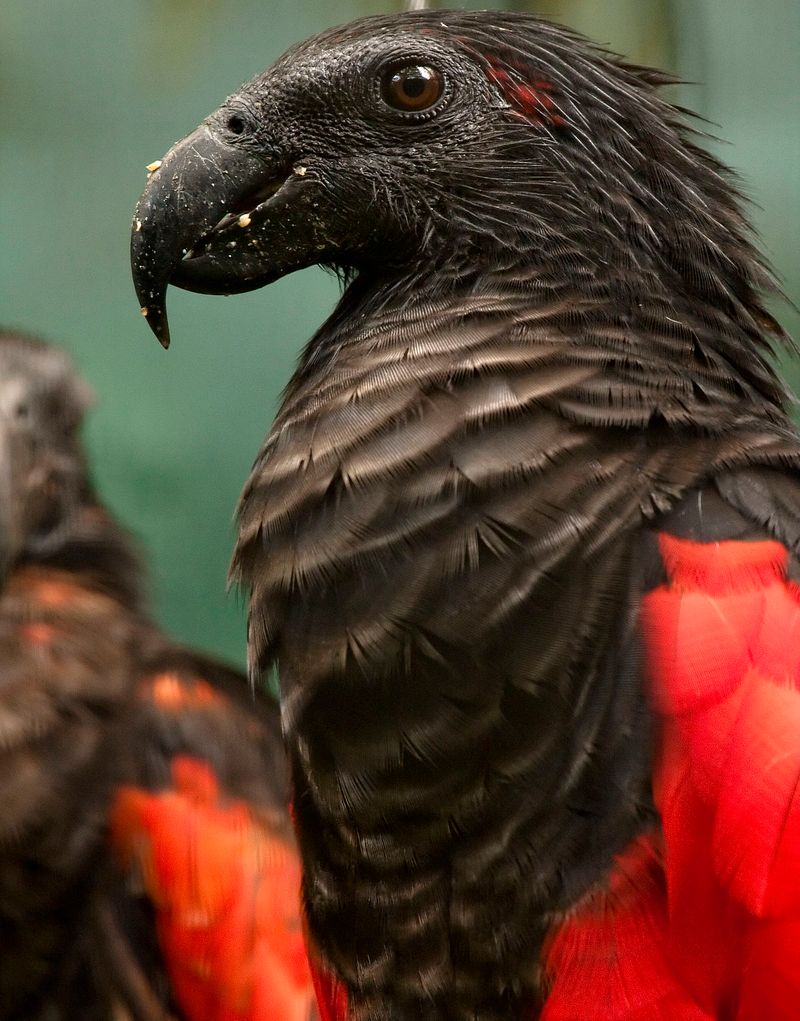
In the grand tapestry of avian life, the Dracula Parrot stands alone. It is the only member of the genus Psittrichas, making it a unique evolutionary marvel. This singular status sets it apart, highlighting its distinct evolutionary path. As the sole representative of its genus, the Dracula Parrot carries the legacy of a lineage that has adapted and thrived in the rainforest’s intricate ecosystem. Its unique classification adds another layer to its mystique, elevating its status from just another bird to a symbol of evolutionary triumph in the gothic realms of New Guinea.
A Bird of the Canopy
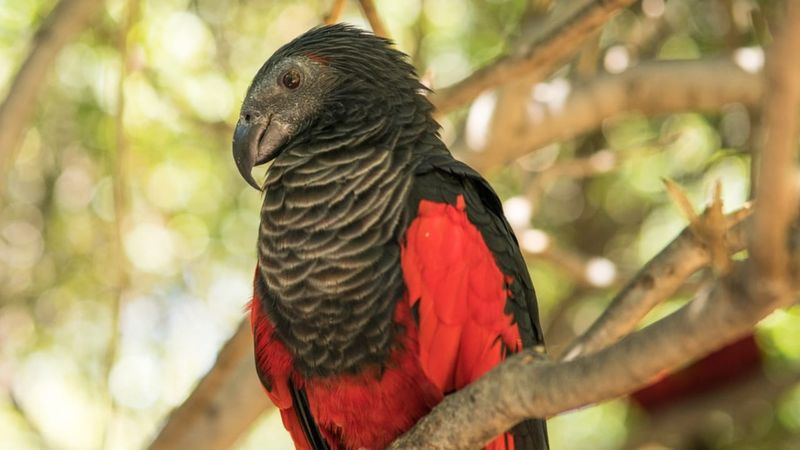
High above the forest floor, where light filters through the leaves, the Dracula Parrot finds its home. This bird is a canopy dweller, expertly navigating the upper layers of the forest. Its life among the treetops offers safety and access to abundant fruit. The Dracula Parrot’s adaptation to this vertical world is a testament to its evolutionary success. Living in the canopy allows the bird to avoid many ground-dwelling predators, while its vibrant plumage contrasts beautifully against the verdant backdrop. This arboreal lifestyle completes its gothic mystique, soaring above in a world few can reach.
Adapted Beak for Feeding
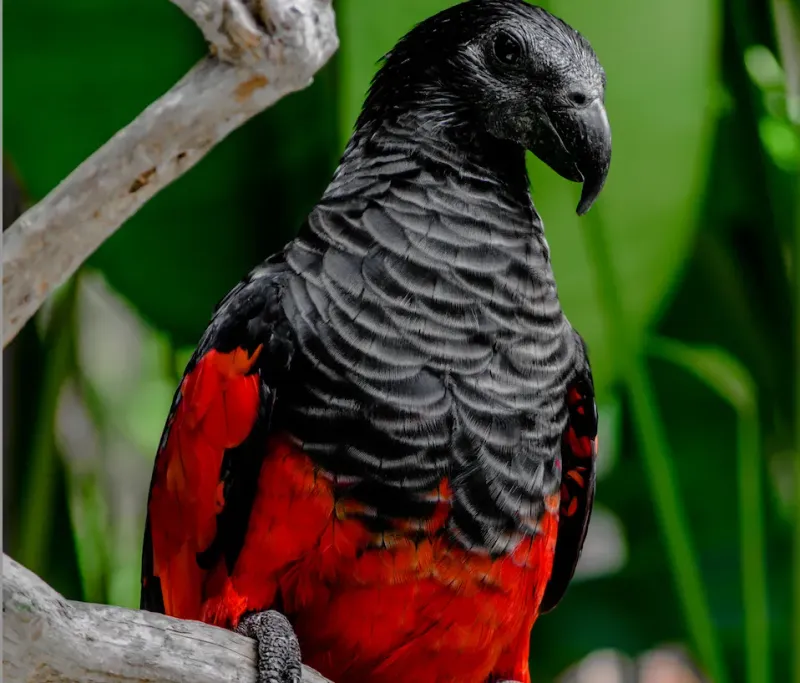
The Dracula Parrot’s beak is a marvel of adaptation. Its hook-shaped structure is finely tuned for its frugivorous diet, allowing the parrot to expertly extract fruit from its shell. This specialized beak is not just a tool for feeding but a symbol of the parrot’s evolutionary prowess. Through countless generations, the Dracula Parrot has honed its beak to perfection, ensuring its survival in the competitive rainforest. This adaptation is a crucial aspect of its gothic identity, allowing it to thrive amidst the challenges of its environment with elegance and efficiency.
Remarkable Longevity

In the wild, few creatures match the longevity of the Dracula Parrot. With a lifespan that often exceeds 20 years, this bird lives a long and fruitful life. Its remarkable lifespan allows for multiple breeding seasons, contributing to the stability of its population. This longevity is a testament to its resilience and adaptation skills. Over decades, the Dracula Parrot witnesses the ever-changing tapestry of the rainforest, becoming an enduring symbol of survival. Its age-old presence in the forest adds to its gothic mystique, a venerable figure amidst the youthful vibrancy of its surroundings.
Cultural Significance to Indigenous People
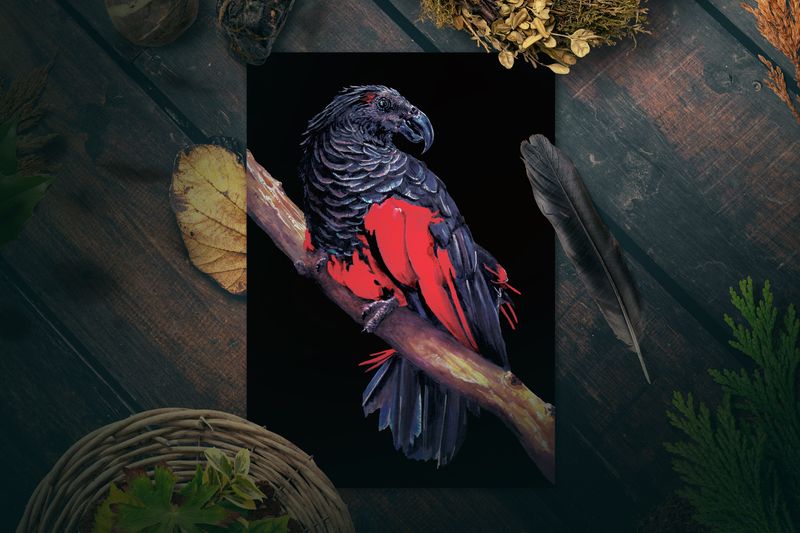
For the indigenous people of New Guinea, the Dracula Parrot holds profound cultural significance. It is often featured in traditional tales and artworks, symbolizing beauty and mystery. This bird is more than just a part of the natural landscape; it is woven into the cultural fabric of the communities that share its habitat. The parrot’s striking appearance and unique behaviors inspire stories that are passed down through generations. This cultural connection underscores the parrot’s importance beyond its ecological role, embodying the mystical relationship between nature and humanity.
Conservation Efforts in Action
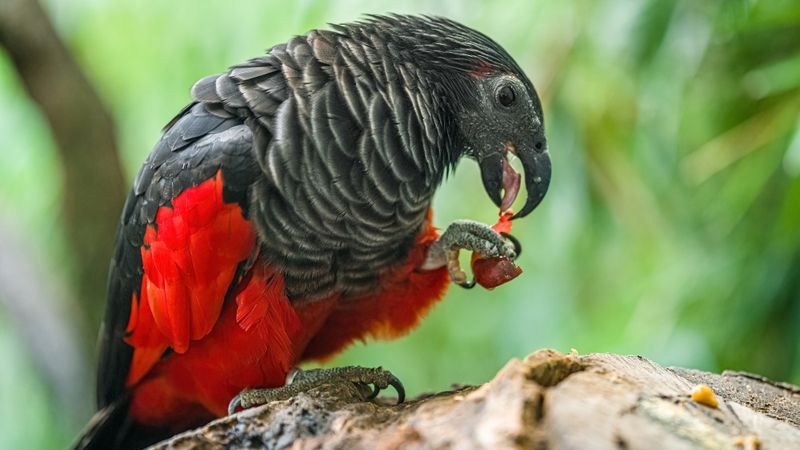
In the face of habitat destruction, the Dracula Parrot has become a focal point for conservationists. Efforts are underway to preserve its natural environment and ensure its survival. These initiatives involve habitat protection, research, and community engagement, aiming to secure a future for this iconic bird. Conservationists work tirelessly, recognizing the parrot’s ecological and cultural significance. Through these actions, the Dracula Parrot symbolizes the broader struggle to protect our planet’s biodiversity. It stands as a gothic beacon of hope, a reminder of the fragility and beauty of our natural world.
The Enigmatic Juvenile Plumage
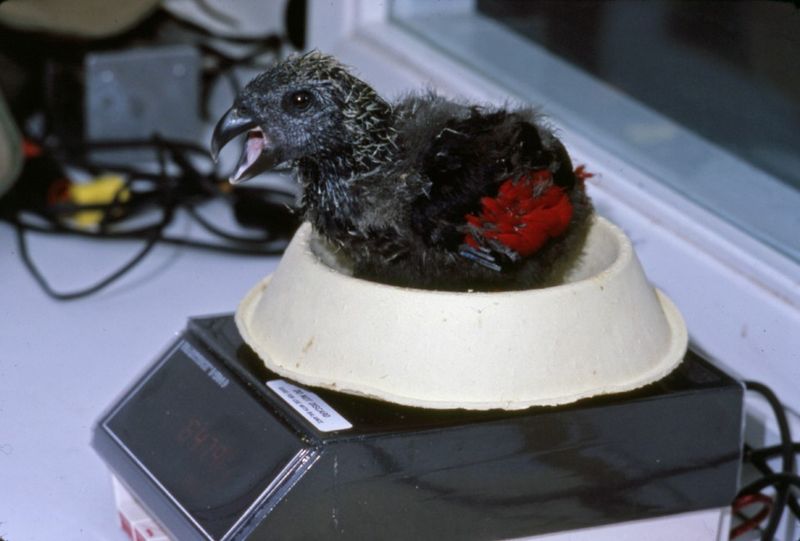
Before the Dracula Parrot dons its iconic gothic attire, it begins life in a subtler guise. Juveniles sport a muted version of the adult’s striking plumage, with less pronounced red and black. This youthful appearance offers camouflage, protecting them as they learn to navigate the forest. As they mature, their colors intensify, marking their transition into adulthood. This gradual transformation is a fascinating aspect of their development, adding depth to their gothic allure. The journey from juvenile to adult is a visual testament to the parrot’s growth and adaptation in its complex environment.

